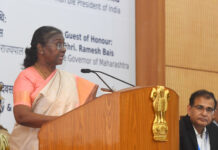
Much ground has been covered; tobacco taxes are the ultimate frontier for India
Between a 2008 ban on smoking in public places under the aegis of then health minister Anbumani Ramadoss and a hard fought battle for larger pictorial warnings on tobacco packs, India has come a long way on the Tobacco Road.
Yet, with almost a fifth of its adult population addicted to tobacco in some form or the other, tobacco continues to be a public health epidemic of massive proportions. The Tobacco Atlas which estimates the prevalence of tobacco use across the world throws up some startling numbers on India.
“Tobacco harms the health, the treasury, and the spirit of India. Every year, more than 932600 of its people are killed by tobacco-caused disease. Still, more than 625000 children (10-14 years old) and 103614000 adults (15+ years old) continue to use tobacco each day,” it says.
More 932600 of its people are killed by tobacco-caused disease. Still, more than 625000 children (10-14 years old) and 103614000 adults (15+ years old)
It also estimates that the economic cost of smoking in India amounts to Rs 1818691 million. This includes direct costs related to healthcare expenditures and indirect costs related to lost productivity due to early mortality and morbidity. May 31 is observed as the World No Tobacco Day.
The Global Adult Tobacco Survey 2016-17 puts some of these figures in context. It estimates:
* 19.0% of men, 2.0% of women and 10.7% (99.5 million) of all adults currently smoke tobacco
* 29.6% of men, 12.8% of women and 21.4% (199.4 million) of all adults currently use smokeless tobacco
* 42.4% of men, 14.2% of women and 28.6% (266.8 million) of all adults currently use tobacco (smoked and/or smokeless tobacco)
Every once in a while there is a public debate on tobacco whether or not it is really the villain and on the plight of tobacco farmers post crackdown. The last time it played out at its full decibel was when India was trying to make it mandatory for tobacco packs to have a graphic warning covering 85 percent of the area of tobacco packs. Last year when there was a home ministry crackdown on several organisations including the Public Health Foundation of India which is a public private partnership, there were murmurs of the tobacco lobby’s involvement.
Despite the occasional hiccups though India has more or less stayed on course on tobacco. Prices are still low though they are higher than some other countries in the same economic bracket.
In a recent commentary in The Lancet, the Sugar, Tobacco, and Alcohol Taxes (STAX) Group of the London School of Hygiene & Tropical Medicine wrote: ” Mexico’s sugar tax reduced sugar- sweetened beverage sales by 5% in the first year, with an almost 10% further reduction in the second year.4 Tobacco taxes in South Africa contributed to tobacco consumption decreases of about 40% between 1993 and 2003.5 When Finland reduced taxes on alcohol in 2003, alcohol-related mortality increased by 16% among men and by 31% among women.6 As part of a broader public health approach to promote a life-course approach to prevention and to address commercial determinants of health, it is now time for governments to adopt sugar, tobacco, and alcohol taxes (STAX).”
That, for India is perhaps the ultimate tobacco frontier.













